Eucalyptus trees are the fastest-growing Australian native tree that comes in a variety of types and hybrids. Some, however, grow a lot faster than others.
The rate of growth is determined by the climate and availability of water to the tree, but all things being equal, these are the six fastest-growing eucalyptus trees.
Table of contents
Toggle#1. Eucalyptus neglecta 'Big O'
This eucalyptus tree is one of the fastest-growing and has become one of the most popular eucalyptus species in the US. It was given the nickname “Big O” because of its distinctive, huge, spherical leaves. Juvenile foliage is a vibrant blue with crimson highlights that is fragrant and a show stopper in any floral or dry flower arrangement.
The juvenile leaves are huge, spherical, and on square stems, and they normally last for 7-15 years before the mature, elongated leaves appear. In a cool, damp atmosphere, the leaf takes on a fantastic violet tint. On the trunk, the bark is tough, fibrous, and greyish, but smooth and green above.
Big O is well-known for its cold tolerance. Big O, when fully grown, could stand 20′ tall with an equal spread.
Features of ‘Big O’
- Supports all soil types.
- After implantation, it will deal with damp soil.
- Very little upkeep is required.
- Many plants will not grow under the canopy of Eucalyptus because it is allelopathic.
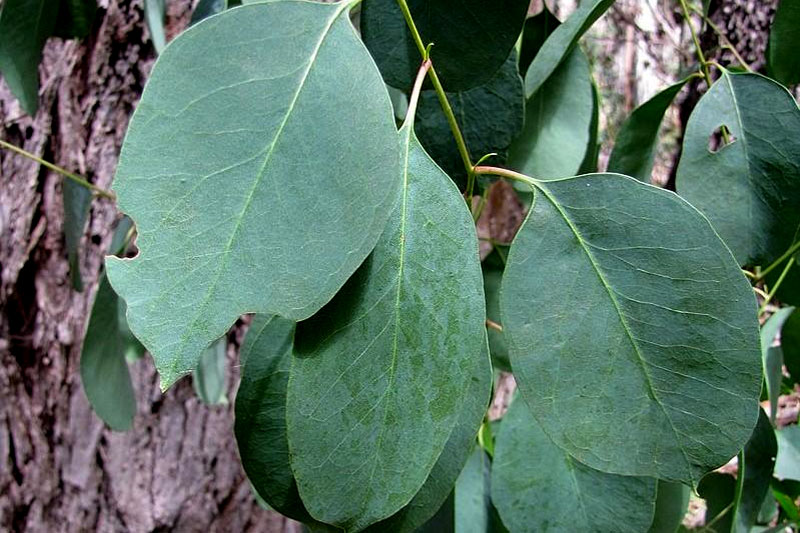
#2. Eucalyptus rubida (Candlebark)
Eucalyptus Rubida is known as ‘Cab Sav’ because of its richness and smoothness. “Cab Sav” is a beautiful huge ornamental evergreen tree found throughout Australia’s high highlands. It is also one of the fastest-growing eucalyptus trees and has smooth white peeling bark that is typically spotted with pinkish or salmon spots, particularly in chilly, damp areas.
Honey bees are attracted to its tiny clusters of white blossoms. The abundant, immature foliage is a characteristic pale blue, spade-shaped, fragrant, and ideal for any floral or dry flower arrangement. It has smooth bark that ranges in color from white to burgundy to red-brown.
Features of Rubida
- Hardiness Zone Tolerance is 7-10
- Water is required for establishment. Like another eucalyptus, it is drought-tolerant once grown.
- Soil with good drainage.
- More nutrient-rich soil than the normal eucalyptus.
- Requirement of sunlight
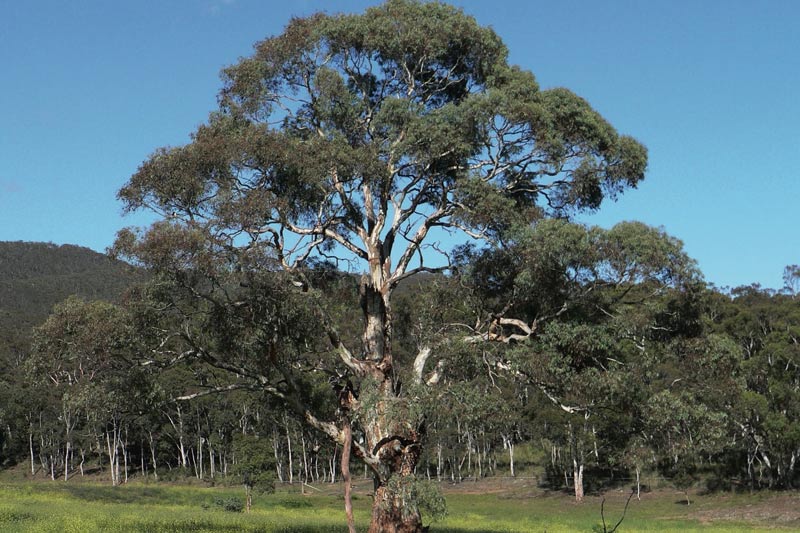
#3. Eucalyptus pauciflora (Snow Gum)
This fastest-growing eucalyptus tree, is the so-called Mappa Tassie, because of its leaf form resembling Tasmania, is regarded as one of, if not the, most cold-tolerant Eucalyptus snow gum species. Snow gum develops in an unusual, twisted pattern.
The twists and curves in its bark can create a beautiful little tree. Snow gum, as the name implies, grows better in colder regions than most Eucalyptus species.
This Eucalyptus species is Mallee which is commonly planted as a tiny tree. Contains White, fluffy blooms or flowers in clusters. Height can grow to be up to 50 feet tall, however, it is normally grown as a little tree.
Features of Pauciflora
- Hardiness Zone Tolerance is 6-9
- Water Requirement is necessary
- Snow gum prefers moist soils that do not dry up. It can, however, endure moderate drought.
- Neutral soils tolerate all soil types but do not thrive in nutrient-deficient soils.
- Sunlight Requirement
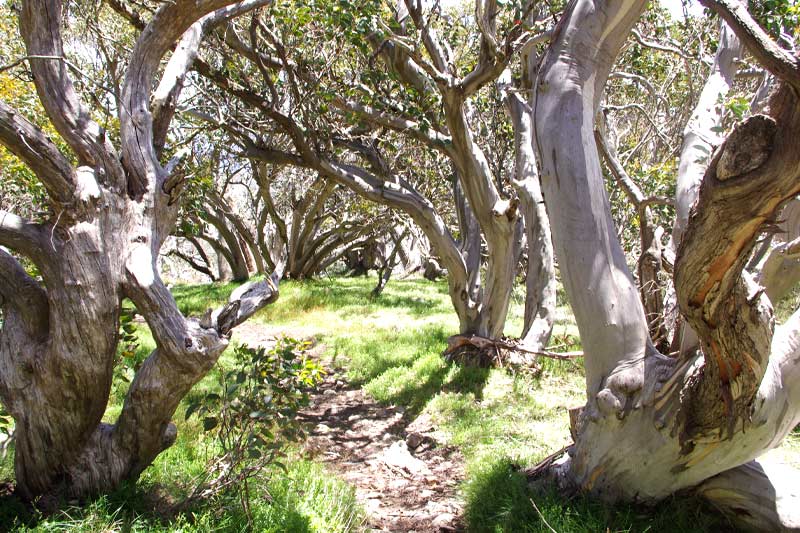
#4. Eucalyptus perriniana (Spinning Gum)
Perriniana cold-resistant Eucalyptus that grows in USDA Zones 7 and 8, and has been recorded to withstand temperatures as low as 0 F. This is also one of the fastest-growing eucalypti, however, it is not the ideal choice for hot, humid regions below zone 8, preferring a colder, drier environment. Perriniana, on the other hand, is ideal for the Mid-Atlantic and Northern States.
The elliptical to oval-shaped silvery-green fragrant leaves that completely encircle the stem, which appear to run right through the middle of the leaf, is maybe the most appealing characteristic!
Features of Perriniana
- Eucalyptus species is Mallee
- The flower is arranged in white flower groups
- Height is up to 30 ft.
- Zone Tolerance Hardiness is 8-10
- Water Requirements are needed
- Tolerates dry to somewhat damp conditions.
- Grows in sandy, acidic soils
- Sunlight is required.
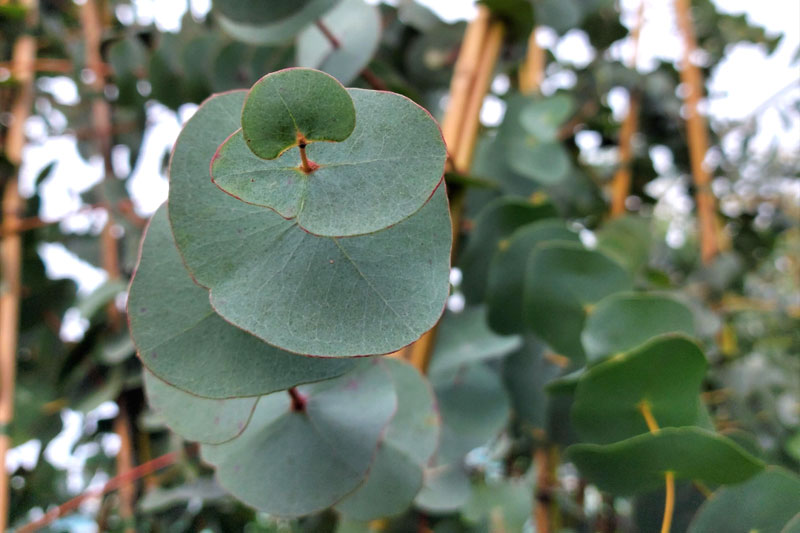
#5. Eucalyptus nicholii (Willow-Leaf-Peppermint)
While this eucalyptus is one of the fastest-growing eucalypti and is abundant in California, it is not as prevalent in its native Australia, where it is classed as a ‘risk to extinction.’ Threats to this tree include habitat conversion, altered fire regimes, and even seed collection for horticulture.
It’s understandable to be perplexed when a species is called ‘invasive’ in one location and ‘endangered’ in another. Angus is a cold-hardier variety of the Willow Leaf Peppermint Eucalyptus, creating a huge, widespread, elegantly weeping, fine-leafed evergreen tree.
The juvenile foliage has shades of crimson and matures to blue-green. The fresh peppermint aroma of the leaves makes them a stand out in any arrangement. The tree’s appealing bark is fibrous brown with orange hues.
Angus should reach 30-50 feet tall and 20-30 feet wide at maturity, depending on the local environment and trimming. The tree’s size is easily controlled, and it responds well to trimming. ‘Angus’ tolerates dry soil well, is disease resistant, has excellent heat and drought tolerance, and has proven to be more cold-hardy than the other species in our testing.
Features Of Nicholii
- High, widespread branches on a single trunk.
- Description of a Flower is; White flower bunches in little clusters
- Zone Tolerance Hardiness is 8-10
- It cannot withstand persistent dampness. Prefers drier conditions.
- Most soils are acceptable as long as they drain effectively.
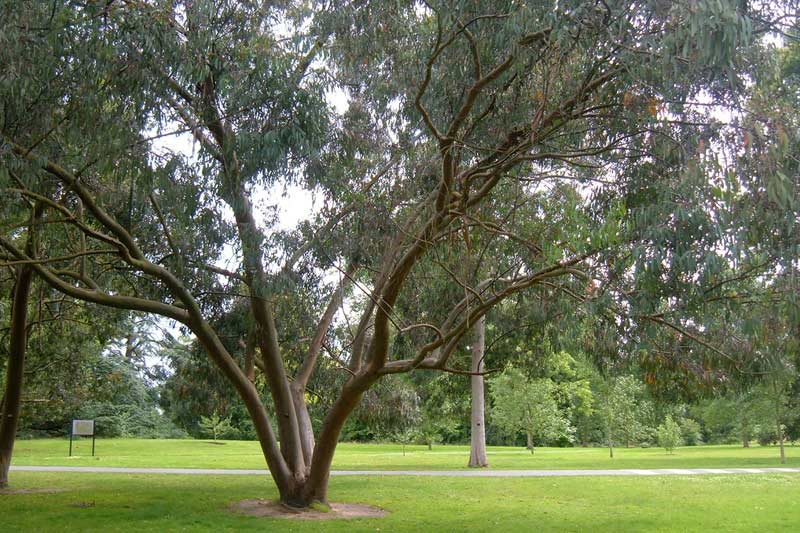
#6. Eucalyptus elliptica (Grace)
’Grace’ or Elliptica is a cold-tolerant Eucalyptus named for its graceful behavior. This beauty is one of the quickest growing in culture and is colder tolerant than the species. In the Atlanta, Georgia area, there is a specimen that has grown from seed to 20 feet in two years! ‘Grace’ is disease-resistant, long-lived, and extremely cold hardy.
This tree is easy to manage in terms of size, and it responds well to pruning. It could stand 40 feet tall.
‘Grace’ has juvenile leaves that are spherical, stem-clasping, and bluish-green before maturing to broad, lanceolate adult leaves. In the fall and winter, the elongated leaves and stalks become crimson and purple.
Features of Elliptica
- The flower color is white, the flowering period is in summer and the Foliage Colour: Is bluish-green, turning purple and burgundy in the fall.
- Water requirement is average and low when established.
- Hardiness Zone Tolerance is 7-11
- Full sun or partial shade is required.
- It is Well Drained; Clay (Amended), Loam, Sand, and Silt Soil Drainage/ Moisture.
- When left in its natural state, management, and care are minimal.
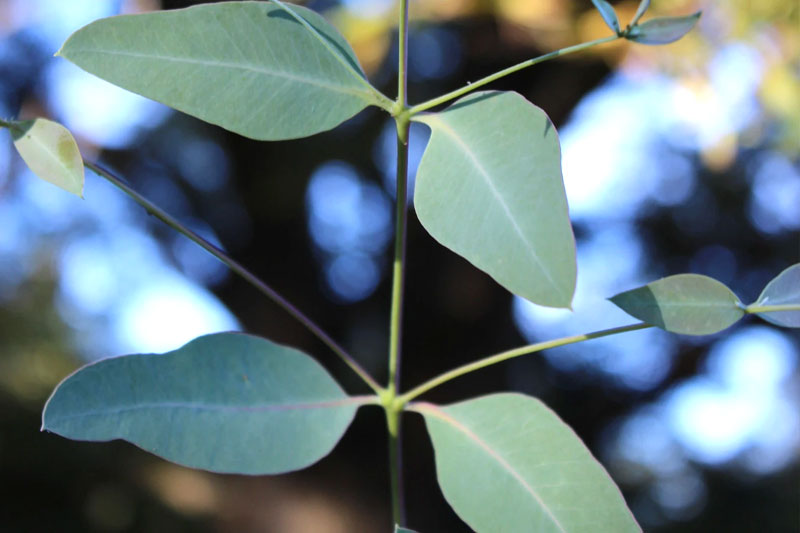
What is a Eucalyptus Tree?
Eucalyptus is a taxonomy of around 700 species of flowering trees, shrubs, and mallees in the Myrtaceae family. They are frequently referred to as eucalypts, along with several other genera in the tribe Eucalyptine, including Corymbia. Eucalyptus plants have smooth, fibrous, rough, or stringybark, leaves with oil glands, and sepals and petals joined to create a “cap” or operculum above the stamens. The fruit is a woody capsule known colloquially as a “gumnut.”
Eucalyptus trees can grow to be 300 feet tall. Their bark is soft to the touch and easily peels away. They are classified as gum trees because of the sap that is expelled when the bark is broken. Bluegum (Eucalyptus globulus) is the most popular eucalyptus tree, and it receives its name from its blue-green leaf.
Eucalyptus leaves provide the majority of the food for Australian koalas, who consume approximately one pound of leaves per day. Eucalyptus plants are now planted all over the world for their therapeutic and menthol-like scent.






